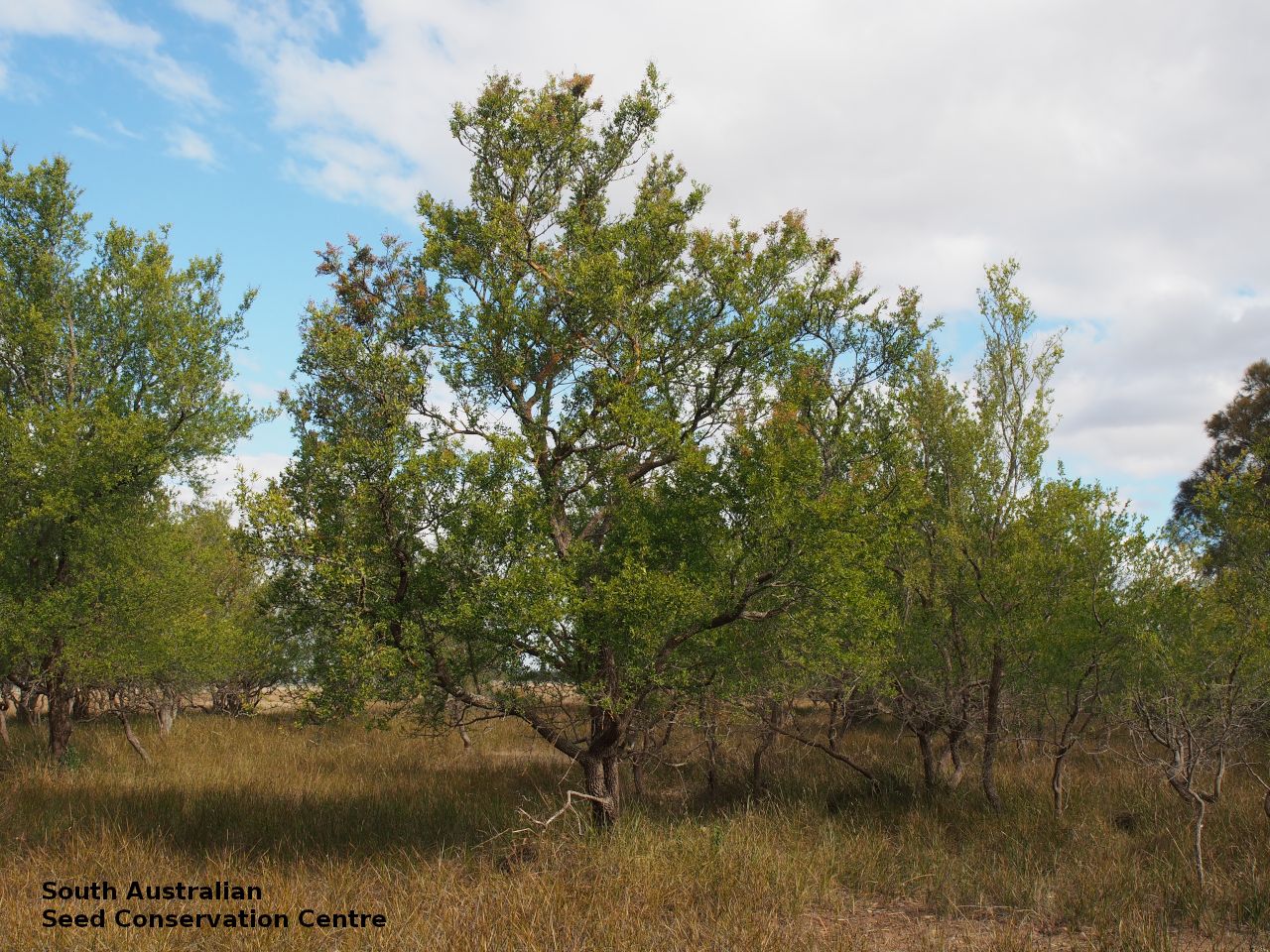
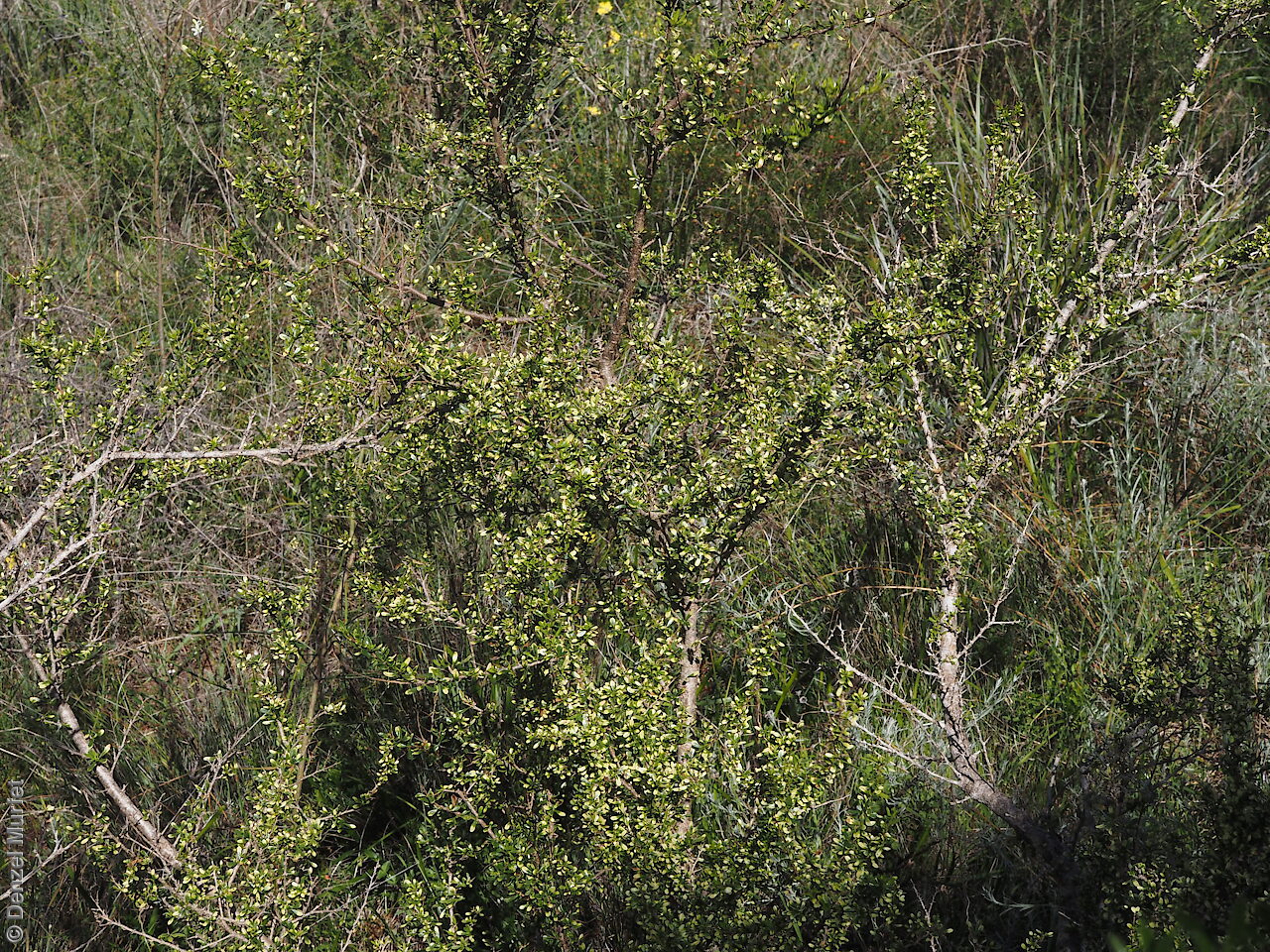
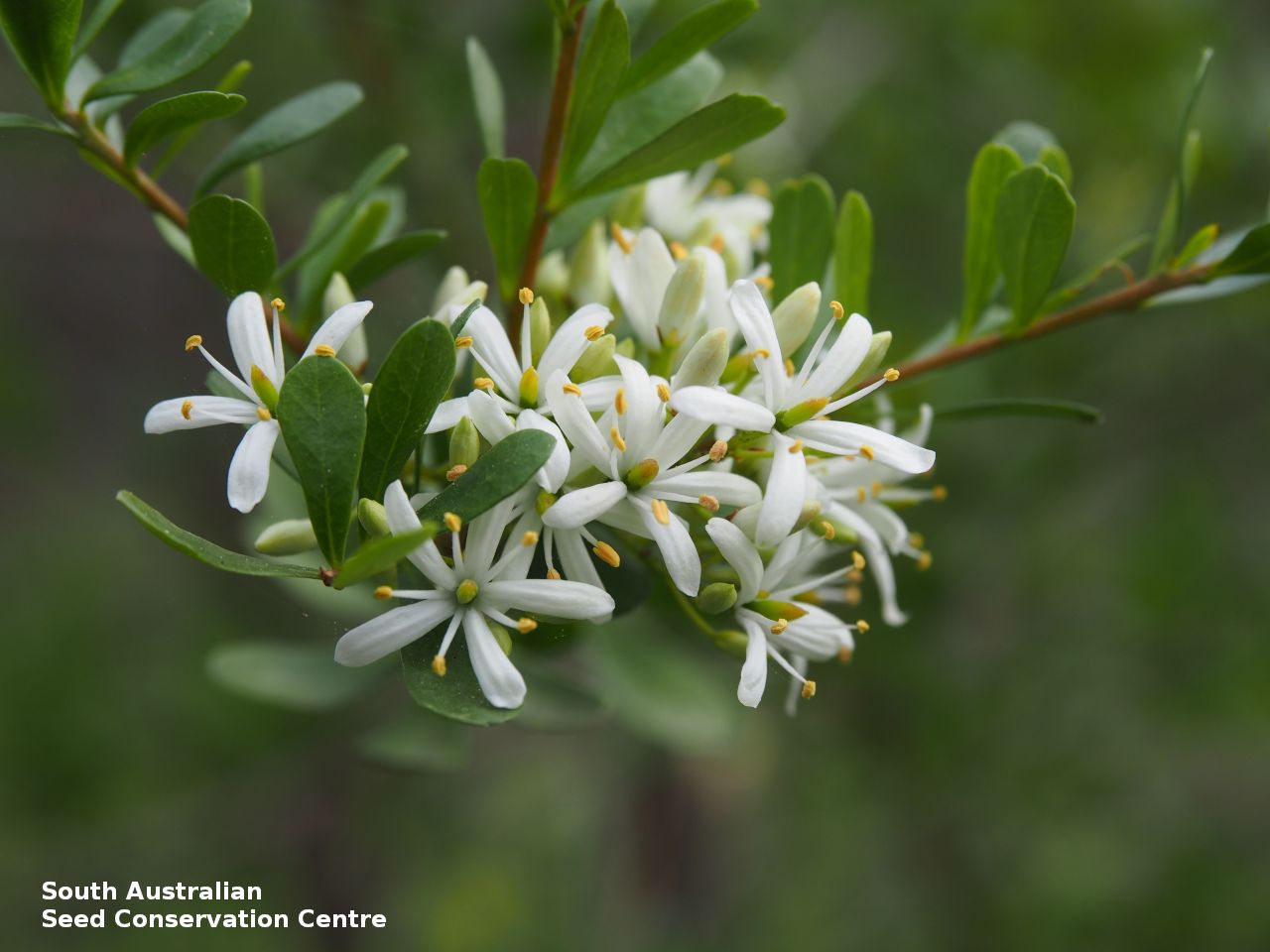
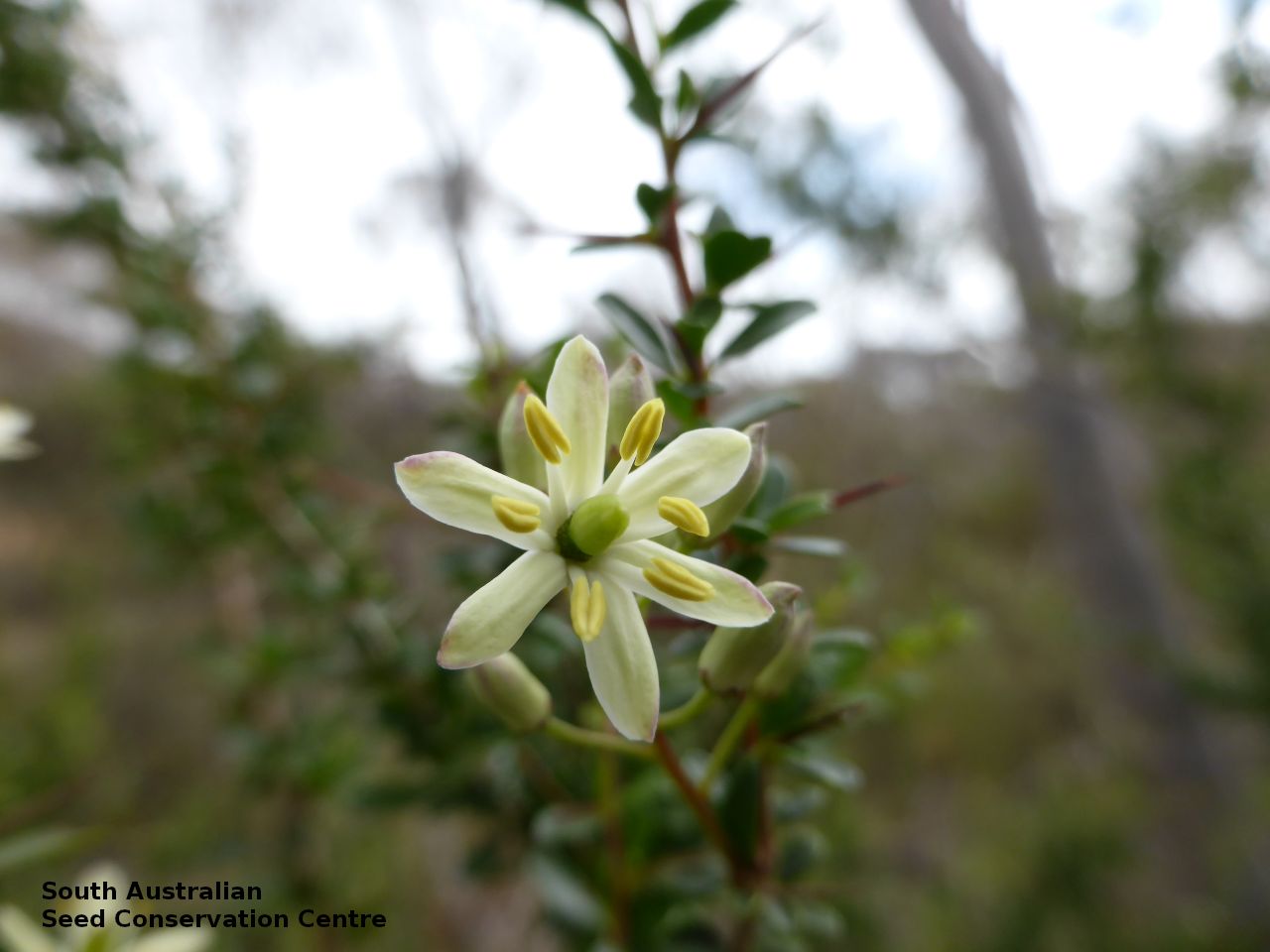
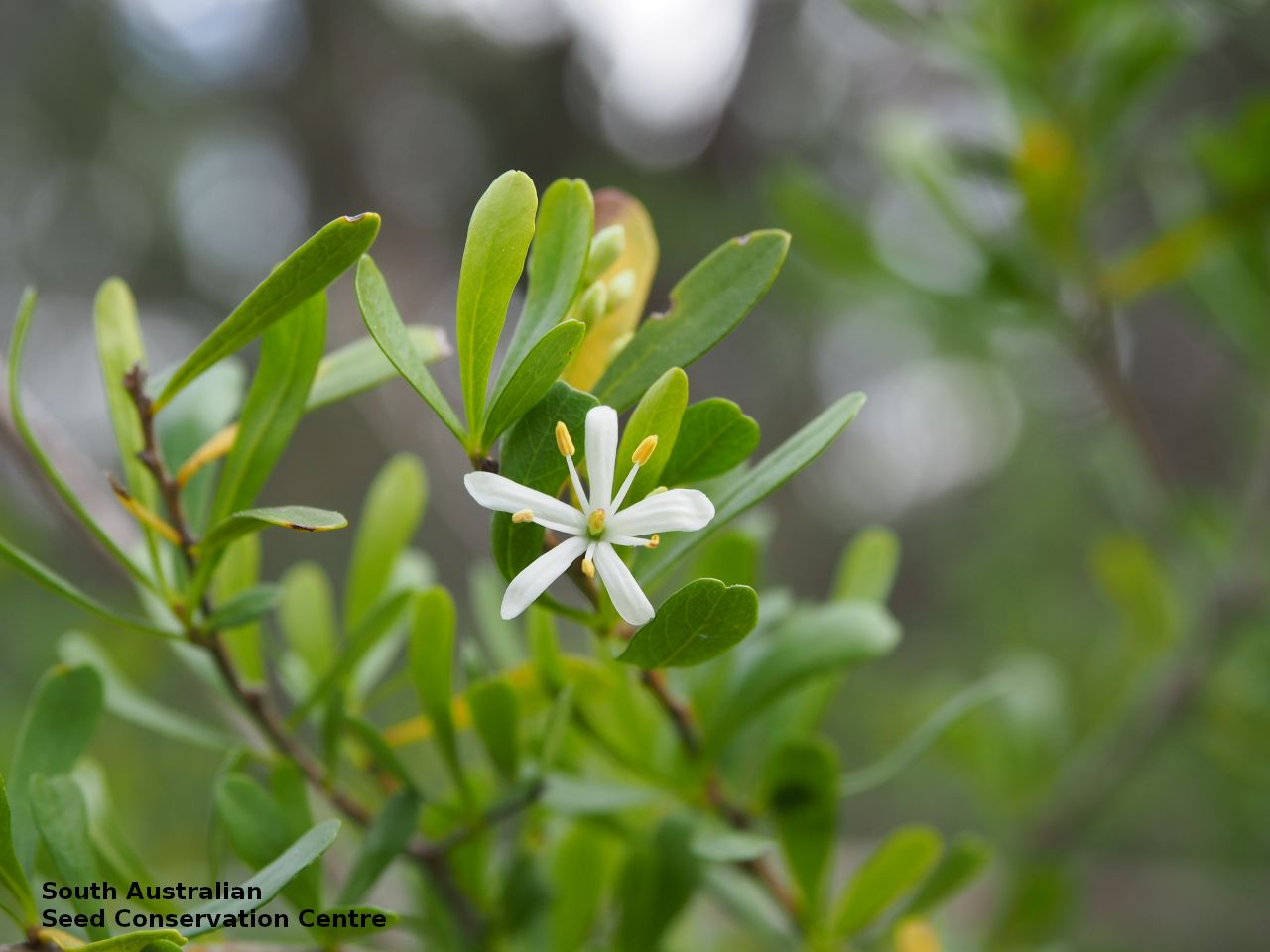
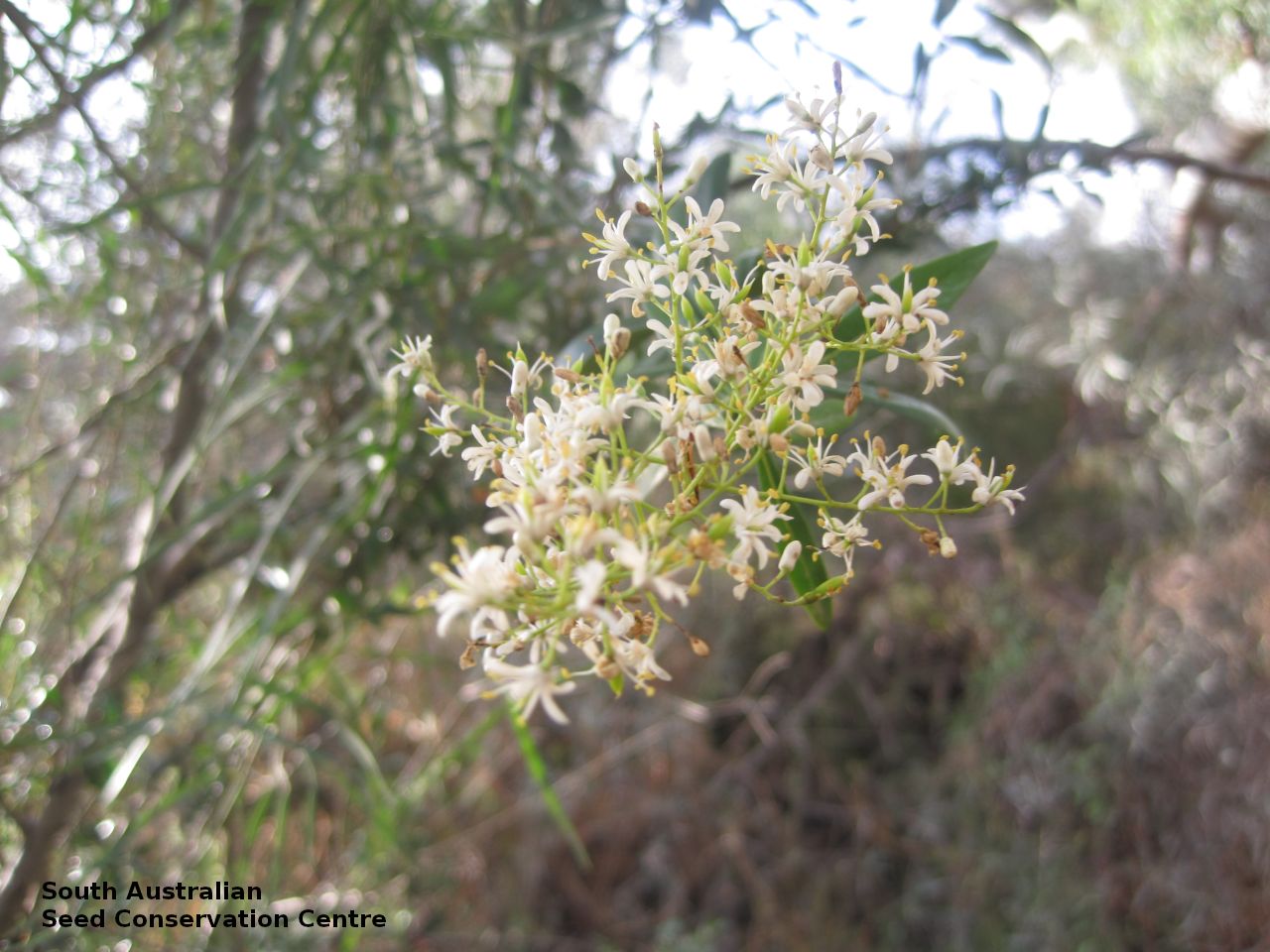
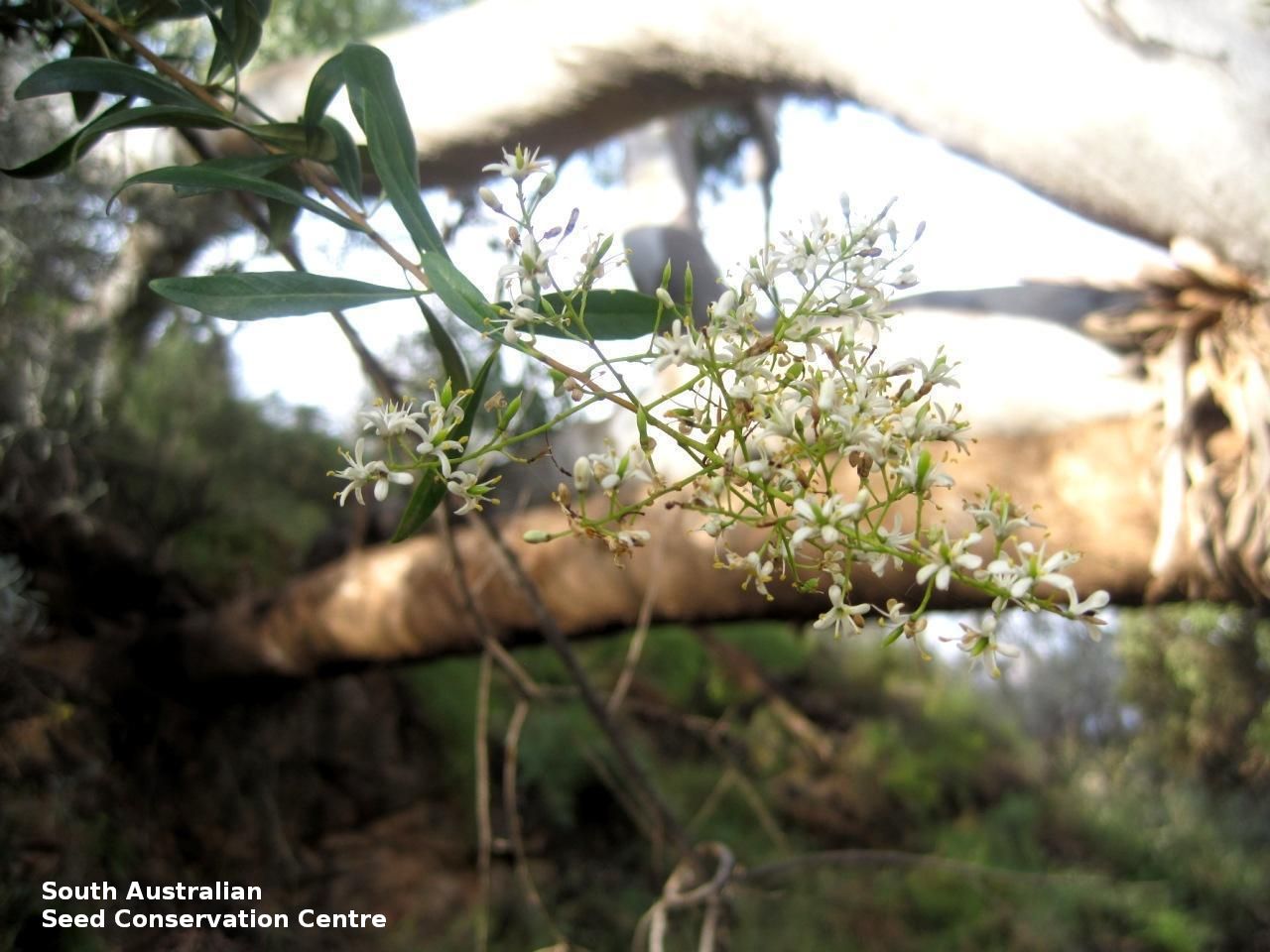
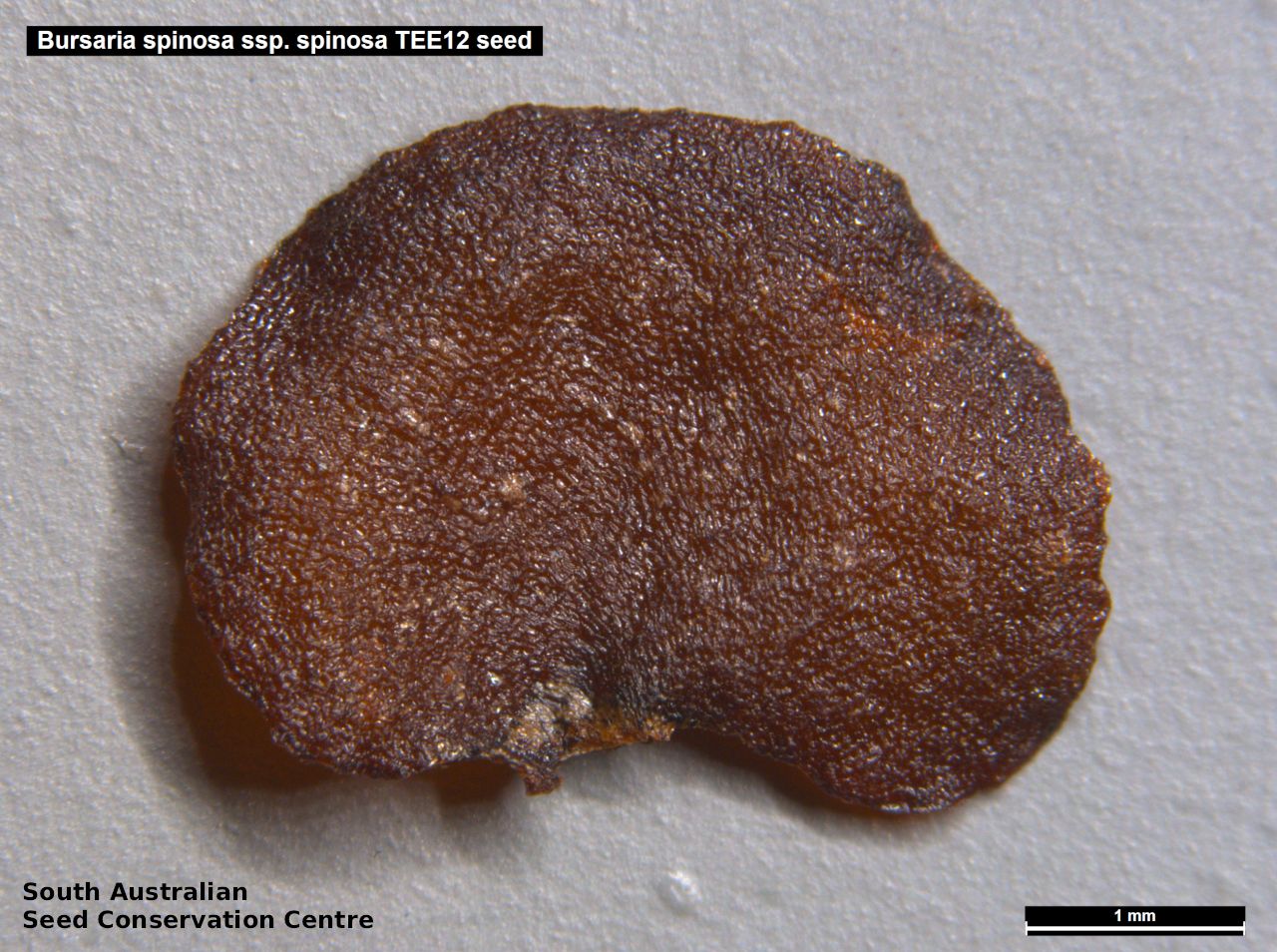
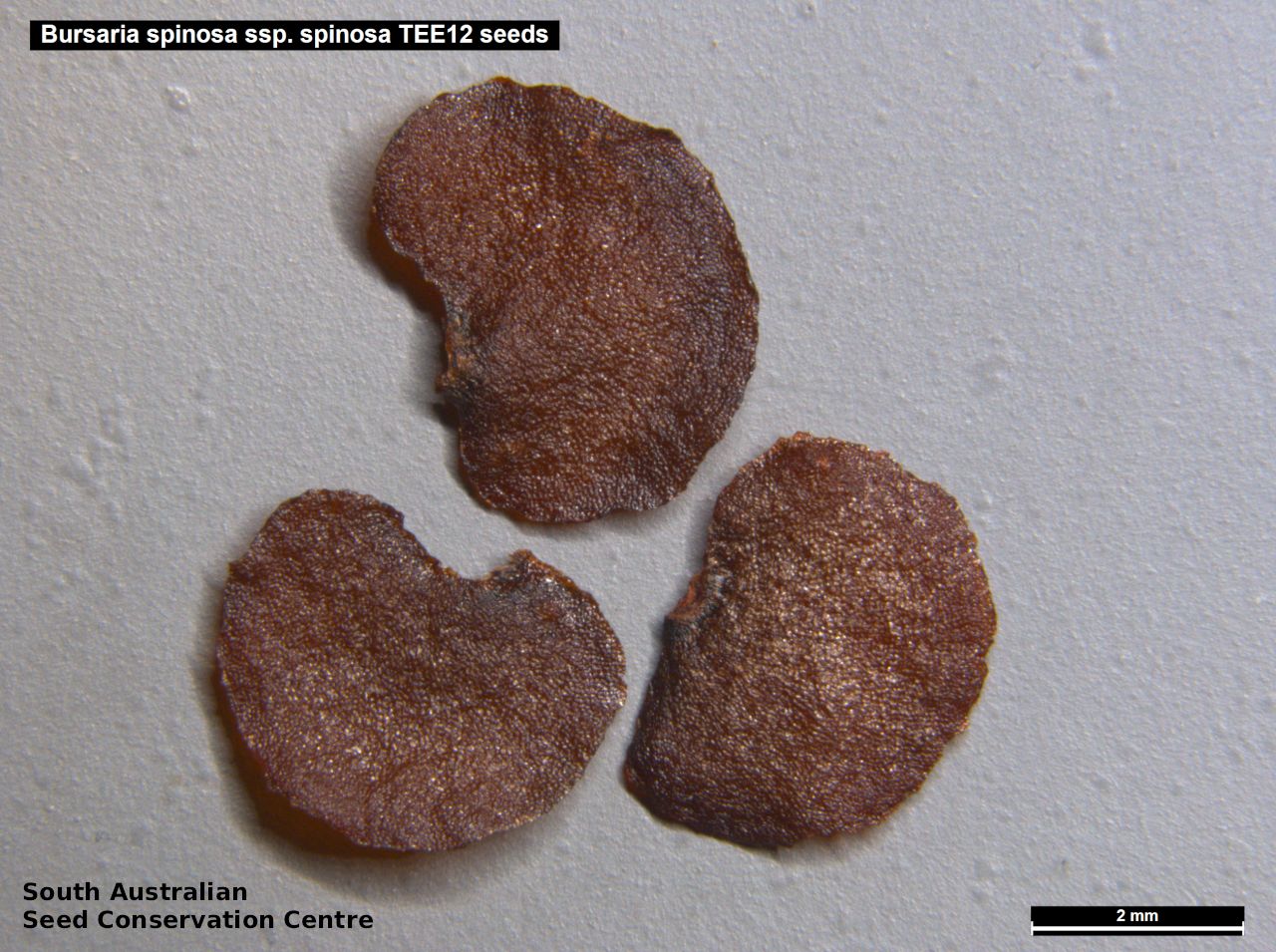
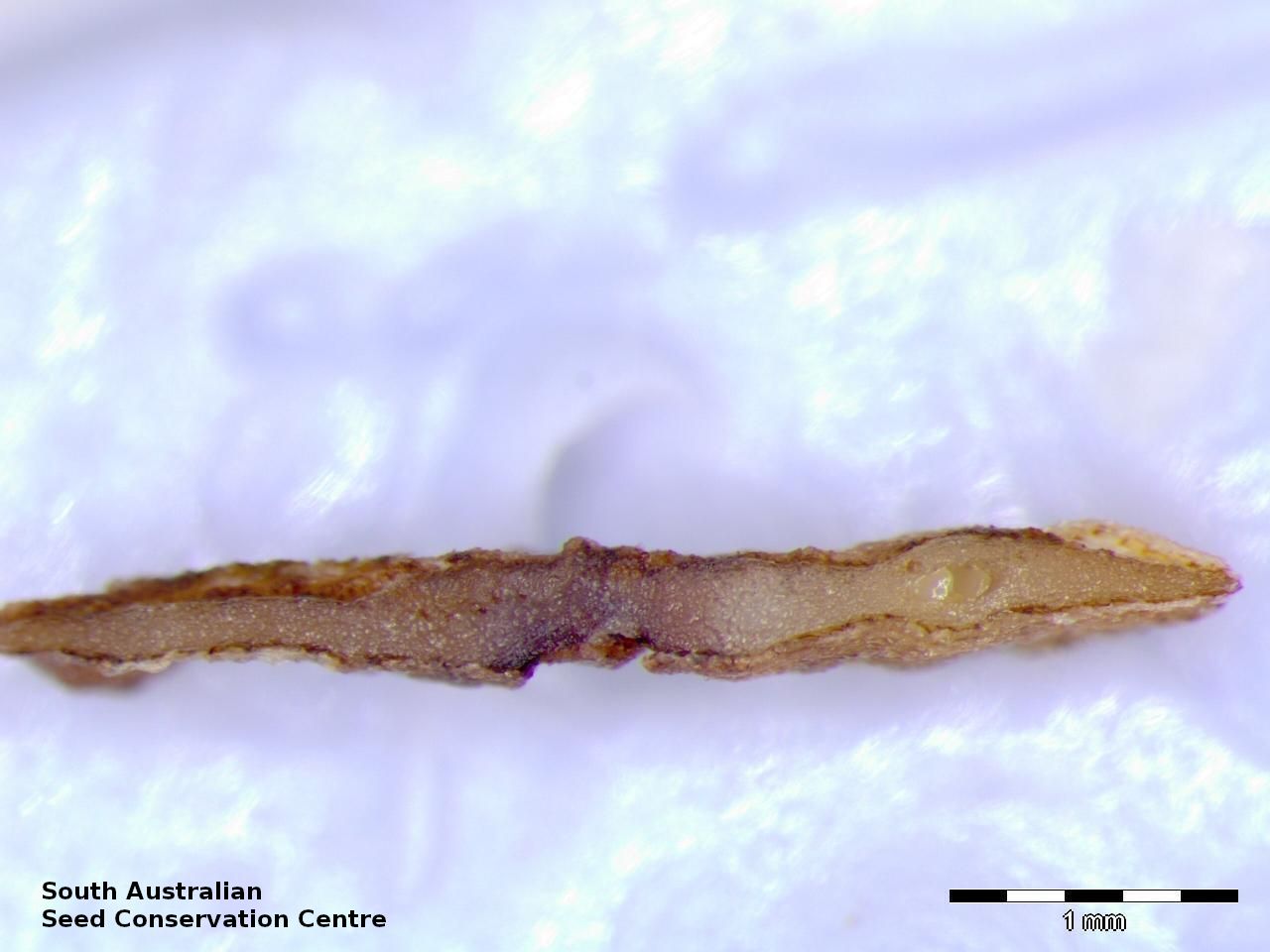
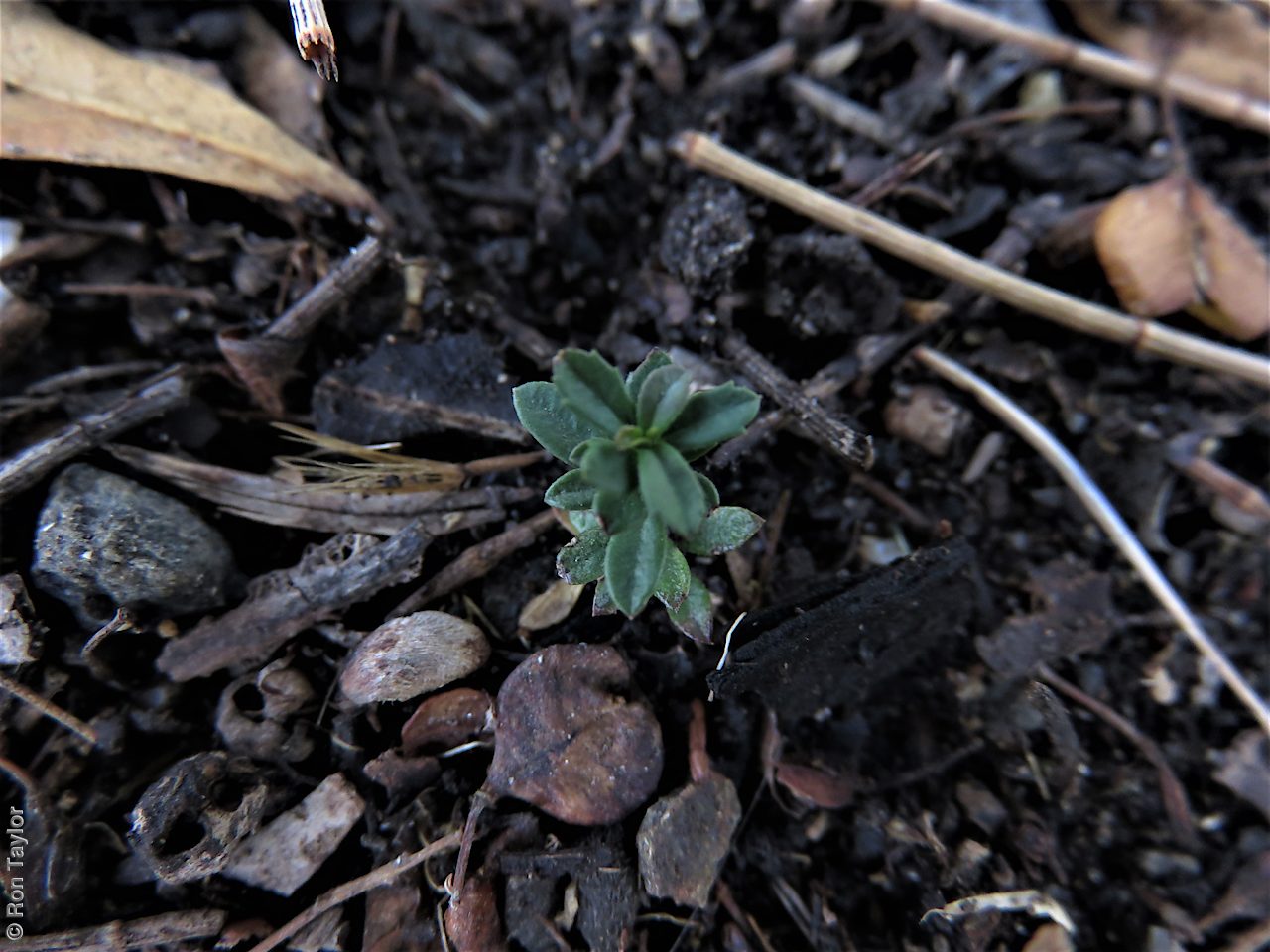

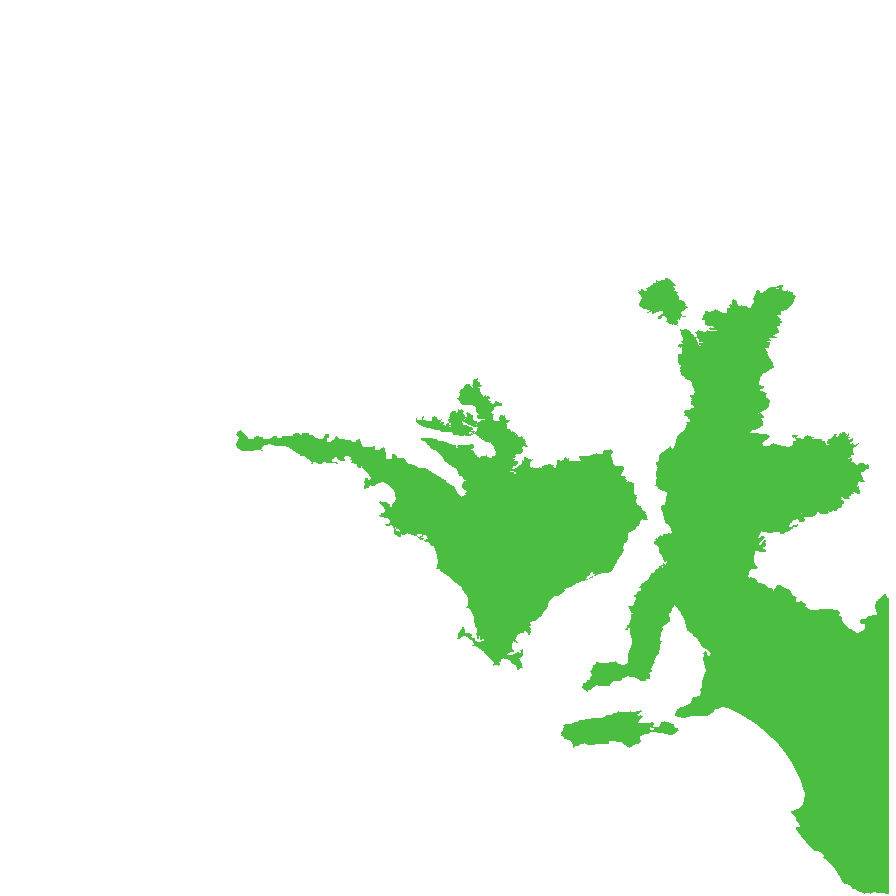
Botanical art
Prior names
Bursaria pantonii
Cyrilla spinosa
Bursaria spinosa var. pantonii
Bursaria spinosa var. obovata
Bursaria spinosa var. microphylla
Bursaria spinosa var. macrophylla
Bursaria spinosa var. lanceolata
Bursaria spinosa var. australis
Itea spinosa
Common names
Christmas Bush
Sweet Bursaria
South Australian Christmas Bush
Etymology
Bursaria from the Latin 'bursa' meaning a purse or pouch, referring to the shape of the fruit. Spinosa from the Latin 'spinosus' meaning thorny, referring to the spines that were present on the type specimen but not present on all plants. Those from drier sites tend to be spinescent but those from well-watered areas tend to be spineless.
Distribution and status
Found across the southern regions of South Australia east of Ceduna and south of Arkaroola, growing in a variety of habitat and soil types. Also found in Queensland, New South Wales, Victoria and Tasmania. Native. Common in South Australia. Common in the other States.
Herbarium regions: Flinders Ranges, Eastern, Eyre Peninsula, Northern Lofty, Murray, Yorke Peninsula, Southern Lofty, Kangaroo Island, South Eastern, Green Adelaide
NRM regions: Adelaide and Mount Lofty Ranges, Eyre Peninsula, Kangaroo Island, Northern and Yorke, South Australian Arid Lands, South Australian Murray-Darling Basin, South East
AVH map: SA distribution map (external link)
Plant description
Tall, low branching shrub or small tree to 10 m with lance-shaped aromatic leaves that alternate or clustered at the base of the spine. Branches sometimes with small thorns. Inflorescence an open pyramid-shaped spike with numerous white flowers. Flowering between November and March. This subspecies differs from the other subspecies Bursaria spinosa ssp. lasiophylla which have dense white or greyish hairs on the underside of the leaves. Fruits are flattened capsules to 8 mm long and 10 mm wide, brown when mature and containing two seeds. Seeds are flat orange-brown bean-shaped seeds to 5 mm long and 3 mm across. Seed embryo type is linear fully developed.
Seed collection and propagation
Collect seeds between February and April. Collect maturing capsules individually or break off whole stems. The capsules should be drying off and turning brown with orange seeds inside. Do not collect capsules that have split open as the seed has already been released. Place the capsules in a tray, cover with paper and leave to dry for 1 to 2 weeks or until the capsules split. Then place the capsules in a bucket with a lid if possible and shake gently to dislodge the seeds. Use a sieve to separate the unwanted material. Store the seeds with a desiccant such as dried silica beads or dry rice, in an air tight container in a cool and dry place. Seed viability is usually high. Viable should germinate readily when sown in winter.
| Location | No. of seeds (weight grams) | Number of plants | Date collected | Collection number Collection location | Date stored | % Viability | Storage temperature |
|---|---|---|---|---|---|---|---|
| BGA MSB | 29,000 (55.97 g) 29,000 (55.97 g) | 100+ | 30-Mar-2006 | DJD122 Southern Lofty | 28-Mar-2006 | 95% | -18°C |
| BGA | 44,400 (63.9 g) | 50+ | 7-Mar-2006 | TEE12 Yorke Peninsula | 8-Aug-2006 | 95% | -18°C |
Number of plants: This is the number of plants from which the seeds were collected.
Collection location: The Herbarium of South Australia's region name.
% Viability: Percentage of filled healthy seeds determined by a cut test or x-ray.